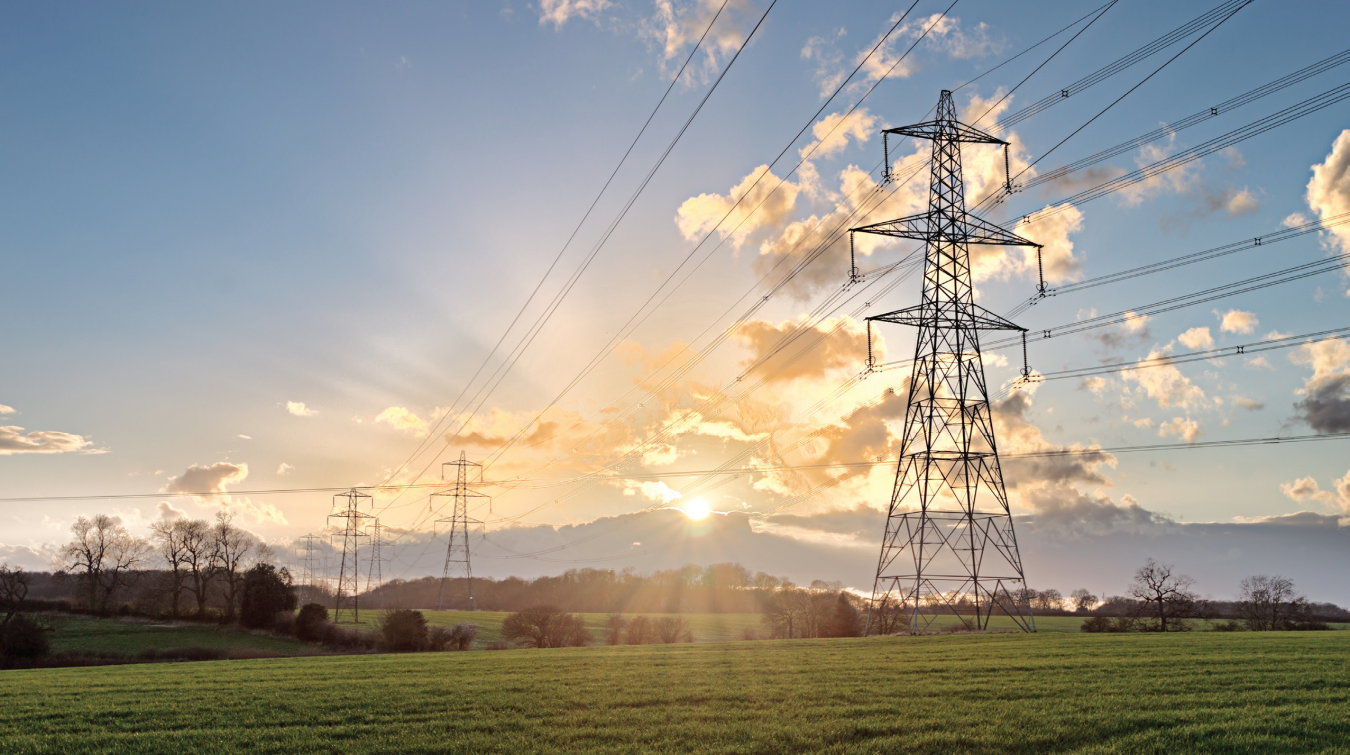DOE-funded grid-enhancing technologies such as dynamic line rating help utilities safely deliver more power, ensuring a more reliable and cost-effective electric system ready to meet the nation’s growing energy demand.
Wind Energy Technologies Office
November 13, 2025The United States faces mounting pressure from surging energy demand, a growing backlog of generation interconnection requests, and aging transmission infrastructure. Expanding data centers, the rise of artificial intelligence (AI) applications, and domestic manufacturing growth are driving this demand. In 2023, data centers alone consumed about 4.4 % of total U.S. electricity, a share projected to rise to as much as 12% by 2028, equivalent to 130 gigawatts of new demand. Grid congestion caused by limited transmission capacity compounds the challenge, preventing electricity from moving efficiently across the country from generators to new loads.
To meet these challenges, the U.S. Department of Energy (DOE) supports research and development (R&D) that modernizes the nation’s power system; unlocks new potential for affordable, reliable, and secure energy for American families; and promotes U.S. energy dominance. As energy demand surges from data centers, AI, manufacturing, and transportation, DOE’s early-stage R&D is enabling a more reliable and cost-effective grid.
Transmission constraints remain one of the most significant barriers to meeting growing U.S. energy demand. DOE is tackling this challenge head-on through grid-enhancing technologies (GETs), which deliver faster, lower-cost solutions by maximizing the performance of today’s grid and supporting the expansion of the energy economy. One of those solutions is dynamic line rating (DLR), a software tool used to optimize transmission line capacity using real-time weather data.
Breakthroughs in Grid Technology
Transmission lines can carry less electricity when they get hot. Utilities have traditionally operated transmission lines based on static assumptions, which set conservative limits on how much a line can safely carry and do not factor in actual weather conditions like wind, which can actively cool transmission lines and allow them to safely carry more electricity. In 2010, DOE’s Idaho National Laboratory (INL) launched research into dynamic line rating. By shifting from static assumptions to dynamic thermal ratings based on real wind and weather conditions, INL uncovered ways to increase power transfer capabilities by 10–40%, demonstrating an agile and cost-effective approach to boosting grid reliability.
In 2016, INL released cutting-edge software—General Line Ampacity State Solver (GLASS)—which leverages weather and operational data to calculate real-time safe transmission capacities. INL partnered with WindSim Power to integrate GLASS with their commercial WindSim Power Line system. GLASS gained widespread recognition from the R&D community as its potential to transform grid operations became clear. In 2017, GLASS was a finalist for the R&D 100 Awards, which highlight the year’s most impactful innovations.
In addition to widespread acknowledgement from the R&D community, INL continued to build on the momentum of this award through commercialization. In that same year, DOE facilitated GLASS’s pathway to commercialization when INL received a grant from DOE’s Technology Commercialization Fund, giving INL and WindSim Power the resources to accelerate the adoption of GLASS among industry leaders and utilities. Through this partnership, GLASS now helps utilities unlock dynamic line rating and integrate additional energy sources seamlessly in order to meet growing electricity demand without paying or waiting for costly new transmission lines or other transmission upgrades. DOE’s support led to entities like GridBright, Avangrid, and the New York Power Authority integrating GLASS and WindSim Power Line software in their grid operations.
GLASS has played a role in enabling the use of dynamic line rating in the United States. Utilities are adopting DLR and other GETs to help unlock new transmission capacity by increasing line ratings, which can accelerate the interconnection of abundant energy sources and reduce costs by maximizing the performance of existing transmission lines. INL’s work on GLASS is emblematic of DOE’s commitment to enhancing grid reliability nationwide.
Transforming Real-World Operations
DLR has translated into meaningful benefits for utilities across the United States. DLR tools have enabled significant cost savings, reduced transmission congestion, and improved performance for multiple grid operators, including:
- Pennsylvania Power Light Electric (PPL), which avoided a $12 million reconductoring project and reduced congestion costs by over $64 million through DLR installations on transmission lines spanning 31 miles.
- Oncor Electric Company, which increased transmission line capacity by 6–14% across its Texas operations using DLR sensors, reducing infrastructure investment needs.
- Duquesne Light Company, which boosted line capacity by 25% during a pilot program in Pennsylvania, paving the way for expanded adoption.
In 2024, the Federal Energy Regulatory Commission (FERC) issued Order 1920, requiring that transmission owners consider using grid-enhancing technologies such as dynamic line ratings and advanced power flow control devices. This order extends the principles of DLR more widely, ensuring utilities design and operate their grids with real-time accuracy—an approach directly informed by INL’s pioneering work.
Scaling Innovations to Meet Future Needs
In 2023, DOE continued its legacy of innovation by allocating $8.4 million to accelerate GETs such as DLR, co-funded by DOE’s Office of Electricity and Office of Energy Efficiency and Renewable Energy. Projects supported by this funding include DLR-enabled drone monitoring systems, advanced sensors for enhancing infrastructure performance, and advanced power flow control devices to enable grid flexibility. These initiatives, combined with DOE’s Transmission Optimization with Grid Enhancing Technologies (TOGETs) project that launched in 2022, further cemented DOE’s leadership by addressing knowledge gaps, conducting field pilots, and enabling utilities to scale up advanced technologies. In July 2025, the Energy Systems Integration Group, a research convening group partnering with INL, released a comprehensive report that outlines actionable strategies to integrate GETs into grid planning, enabling faster and more effective adoption nationwide.



